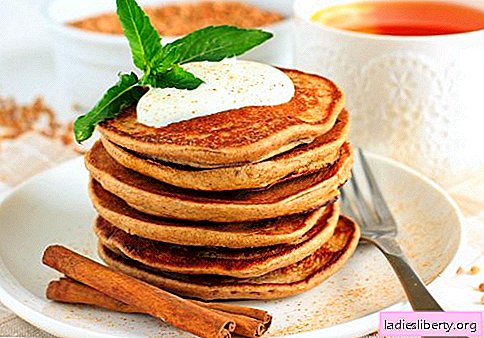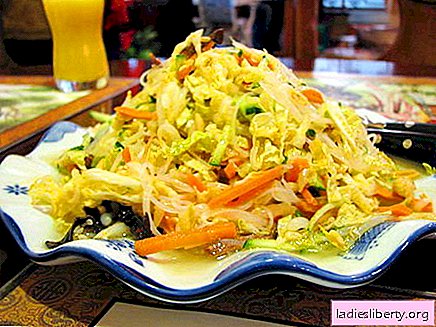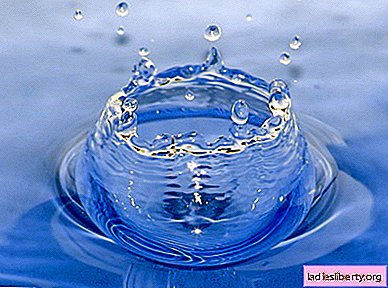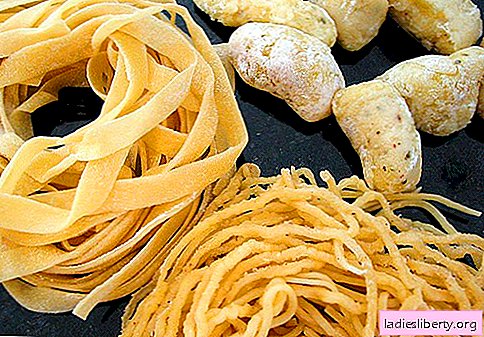
Conference pear fruits are especially popular in winter and early spring, when there is an acute shortage of vitamins. You can stock up on pears from your own garden; growing a tree is not difficult, but it bears fruit well. Learn about all the subtleties of the culture and the features of the variety.
Description of the Conference pear, variety designation and growing regions
Pear "Conference" - an old proven variety of English selection. It was bred by crossing a wild pear with a seedling of a cultivated plant. The tree begins to bear fruit early, has a good harvest, but does not tolerate frosts. Pear is grown mainly in regions with a warm climate, but planting in the gardens of the middle zone is also possible.
The tree is tall, up to 5 m or more. The shoots are powerful, for a year they give an increase of at least 60 cm. The crown is cone-shaped, dense, sprawling. Pear blooms profusely, usually in late May. Fruiting begins with 4 years of cultivation, lasts for 30 years. Productivity from one tree is at least 40 kg, and does not decrease with age.
The variety is unpretentious, resistant to fungal, viral and bacterial diseases. However, his frost resistance is low, when the temperature drops to -20 ° C, the kidneys and the root system of the tree can die.
Only one pear can be grown in the garden, as the tree is self-fruiting and does not require additional pollination. However, experienced gardeners recommend planting other varieties in the neighborhood:
· "Bere Bosk";
· "Bere Hardy";
· "Williams".
This not only improves the taste of the fruit, but also increases their number.
The variety belongs to winter, harvesting does not occur until September. The fruits are consumed fresh or processed. Pears are stored for 4 to 6 months in a well-ventilated and cold store. The taste and appearance of the crop is maintained throughout the entire storage period.
Characteristics of the pear fruit "Conference"
Fruits variety "Conference" large pears. The fruits are elongated, aligned, the stalk is thick. The mass of one pear is about 150 gr. The peel is dense, which allows you to transport the crop over long distances with virtually no loss. The skin color is yellow-green, brown rust is present. The pulp is juicy, delicate, cream-colored. To taste sweet, with sourness.
Harvest is better to collect in the stage of technical ripeness, the variety picks up juiciness, taste and aroma during storage. Harvesting is carried out in dry weather, after which the fruits are kept for several days in warmth. For storage lay dry and sorted pears.

The Conference grade is suitable for industrial cultivation. Fruits are characterized by keeping quality and good transportability.
Advantages of the Conference pear and disadvantages of the variety
Although outwardly the fruits of the pear are not noticeable enough, the variety is highly valued for yield and fruiting stability. In addition, there are a number of advantages:
· The tree tolerates heat and drought;
· The pear rarely gets sick, does not degenerate;
· The variety does not require pollination; it is a pollinator for other trees;
· Fruits are stored up to six months;
· Low-calorie pears, suitable for diet;
· A crop with excellent taste.
Among the disadvantages are low winter hardiness varieties. In addition, the taste of the fruit is completely dependent on weather conditions. If it rains and is cold, then the crop matures poorly, its taste deteriorates.
The variety bears fruit abundantly, but needs to normalize the ovaries. In mid-summer, excess fruit is harvested mechanically or manually. Only strong, medium-sized fruits are left on the branches.
Features of variety cultivation and selection of seedlings of the Conference pear
The variety is unpretentious in care, does not require special growing conditions, easily survives on any soil.
In order for the tree yield to remain high, and the taste of the fruit not to deteriorate, seedlings are placed on the south side of the site. For the normal development and ripening of the crop requires a sunny and spacious place, but reliably protected from cold winds. The wind knocks down flowers, ovaries, kidneys and shoots suffer from it, especially in winter.
Pear grows well on any soil, but on light and loose soil develops better. If the site is heavy soil, then it must be loosened. Watch the level of groundwater, the pear does not tolerate stagnation of moisture at the roots.
Trees are planted at a distance of 3-4 m from each other, since the variety is distinguished by a spreading crown. At least 5 m retreat from the buildings so that the crown is well lit.
The best time for planting a pear is early spring. Before winter, they do not recommend planting a variety, as immature seedlings can die even with a slight decrease in temperature.
In the photo you can see the pear planting pattern.

Before planting, the seedlings are soaked in a solution of potassium permanganate or a growth stimulator.
How to choose a seedling
For planting, it is preferable to choose seedlings grafted on quince. In this case, the pear will begin to bear fruit earlier. The age of the seedlings is 2-3 years, such trees take root well.

Most often, nurseries offer trees with an open root system. Carefully inspect the site of vaccination, roots, branches. They should be elastic, not dry, without signs of damage and growths.
How to care for the Conference pear and prepare the variety for winter
In the southern regions, the variety does not need special care, it is enough to comply with the basic requirements of agricultural technology.
Watering and feeding
The soil moisture requirements of a plant change as it grows. Young seedlings are watered regularly; up to 30 liters of water are consumed per tree. In wet weather, the amount of water is reduced.
Adult trees are not often watered; they cannot tolerate increased soil moisture and are resistant to drought. Trees between the ages of 3 to 6 years are abundantly watered every 7-10 days. More adult specimens once a month, but the amount of water is doubled. Moisture should completely saturate the earthball.
They feed the pear three years after planting. Fertilizers are applied before flowering and after it. Use complex mineral fertilizers and organics. In the fall, the trunk circle is mulched with humus.
If the pear does not bear fruit well, then the yield can be increased. During flowering, the tree is sprayed with urea or a solution of iron sulfate.
Cropping and shaping the crown
The variety requires mandatory pruning, as the crown grows rapidly, poorly transmits light. Intensive shoot growth occurs in 3-4 years of cultivation, it's time to start forming the crown.

Pruning is done in early spring, until the buds open. Remove all thickening branches, dry and broken shoots.
How to prepare the Conference pear for winter
The Conference pear variety is grown in regions with a warm climate, where it winters well without shelter. But gardeners in central Russia, who also plant trees of this variety in their summer cottages, must know how to prepare seedlings for winter.
In late autumn, the trunk circle is dug up and mulched with a thick layer of humus, dry foliage or other material. The height of the mulching layer is at least 20 cm. The trunk of the tree and skeletal branches are covered with a mortar. It is prepared on the basis of 2 kg of lime, 10 l of water and 300 g of copper sulfate. Then the trunk is tied with spruce branches. In winter, the trunk circle is additionally insulated with snow.











